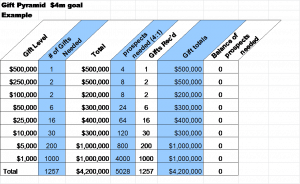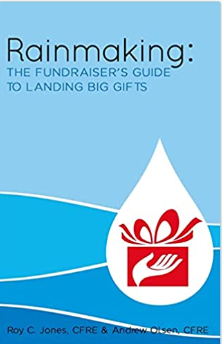 Does your charity have a FUNDRAISING STRATEGY?
Does your charity have a FUNDRAISING STRATEGY?
I am often surprised talking to nonprofits at how many fundraisers are just begging without any real plan. One thing is for certain, I didn’t get into this business just to be a beggar. Your charity needs a fundraising strategy that is clearly understood by both your benefactors and recipients of services.
Your strategy should identify your charity’s goals and the resources, timeline and gift table for accomplishing your objectives. Also, understand that once you spell out your fundraising strategy, you will be regularly redefining and adjusting it based upon both your needs and resources at hand. A successful nonprofit will often have a 5-year strategy plan and adjust it annually, some adjust quarterly.
The process of developing a strategy is a healthy one for most charities. It begins with a strategic narrative that fundraising pros call a “case for support”. This document outlines the overarching goals of the nonprofit and, most importantly, how the charity’s activities will impact both the people they serve and the individuals who support them financially. CASE. This document should be fairly brief, only 4 or 5 pages, and clearly communicate to supporters why funds are needed and how funds will be spent. The case for support is not a vision statement. However, it should be based upon both the organization’s vision and mission statements. (I caution charities not to overthink the case for support. I have seen some charities delay actual fundraising while the group’s board and senior leaders spend months, sometimes years, writing a case for support.)
RESOURCES. After your case statement you must get very specific about the resources you must have to accomplish your objectives. Identifying your resource needs is critical. It must not only include the funds you need to accomplish your mission, but it should also include costs for infrastructure and overhead for staff, equipment, software, databases, website and all your communication channels like mail, email, radio, TV, print and many others.
GIFT TABLE. Once you know how much money you need each year, you have to identify both how many donors you need and the amount at each giving level. We often refer to this process as the gift table. A gift table should be based upon the number of prospects already on your donors file, not simple cold names in your community. I like to call this process “rungs on a ladder”. However, many work it into the traditional donor pyramid of giving. Here is an example of what the table should look like:
PROSPECTS. Knowing who your best prospects is an important element of a fundraising strategy, as it enables you to target your efforts effectively. You may want to categorize your prospects (e.g., individuals, trusts and foundations, corporations). I also encourage folks to spend 80 to 90 percent of their time with people who have already given to their charity. Prospecting outside your data base is very heavy lifting. Remember, most major donors begin by giving a small gift to your charity. They upgrade their giving as the build trust in you and see firsthand the kind of impact you are having.
You need to establish criteria against which you can measure progress. This should be done in consultation with colleagues and should represent realistic expectations based on what can be achieved with the resources available and in the time scales the income is required.
The prospects you call on should fit the model we call SMART: specific, measurable, attainable, realistic and timed. Targets tend to be predominantly financial; but in the early life of a donor, it can be much more instructive to measure activity rather than income. Non-financial targets might include things such as increasing the number volunteer days the support participates in; the number of foundations she helps in your community; the number of supporters he has recruited for your organization.
My friend and mentor, Dr. Ronald Godwin, Provost at Liberty University, used to have a plaque on his door that simply read, show me the numbers. Ron knew the importance of measurements, most importantly, measuring activity. I’ve heard him say a dozen times over the years, “What gets done is what gets measured.” Make sure your fundraising strategy is not some pie-in-sky grand statement. It needs to be measurable and measured in dollars and cents… “Show me the numbers!”


